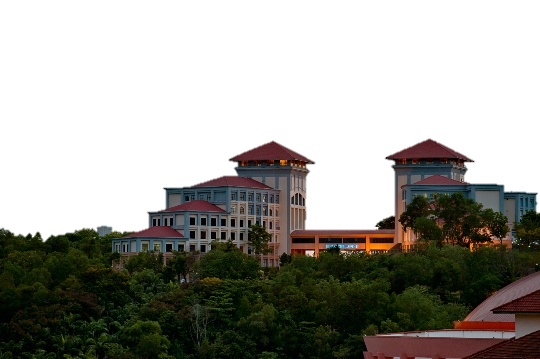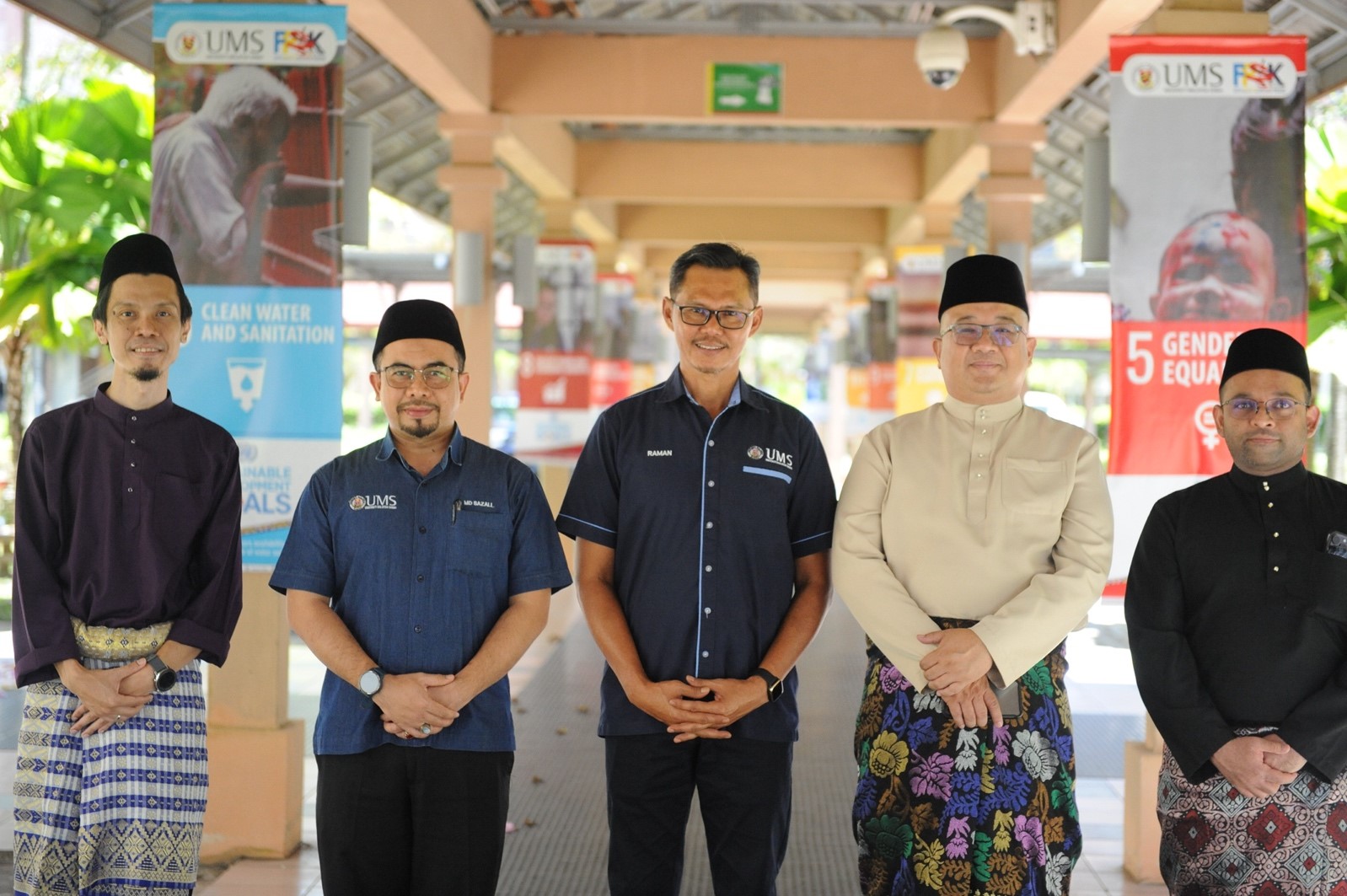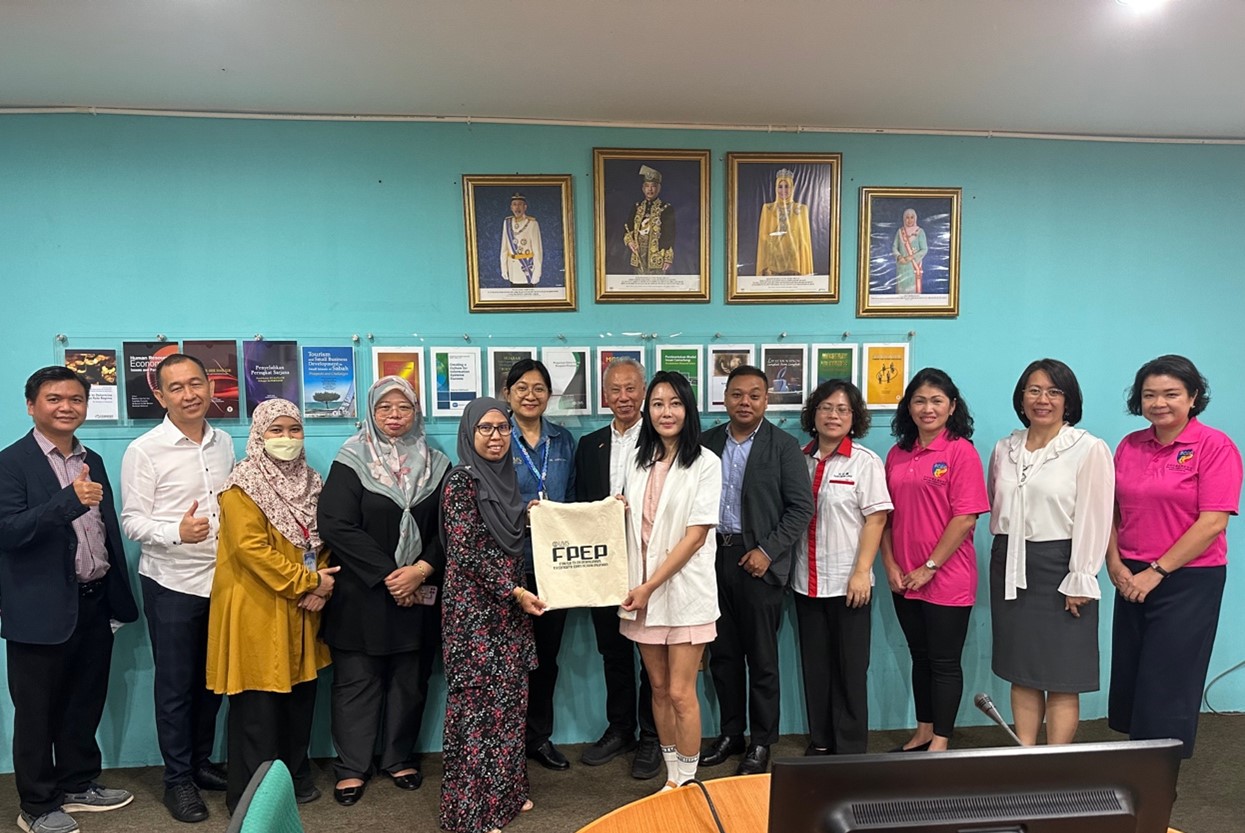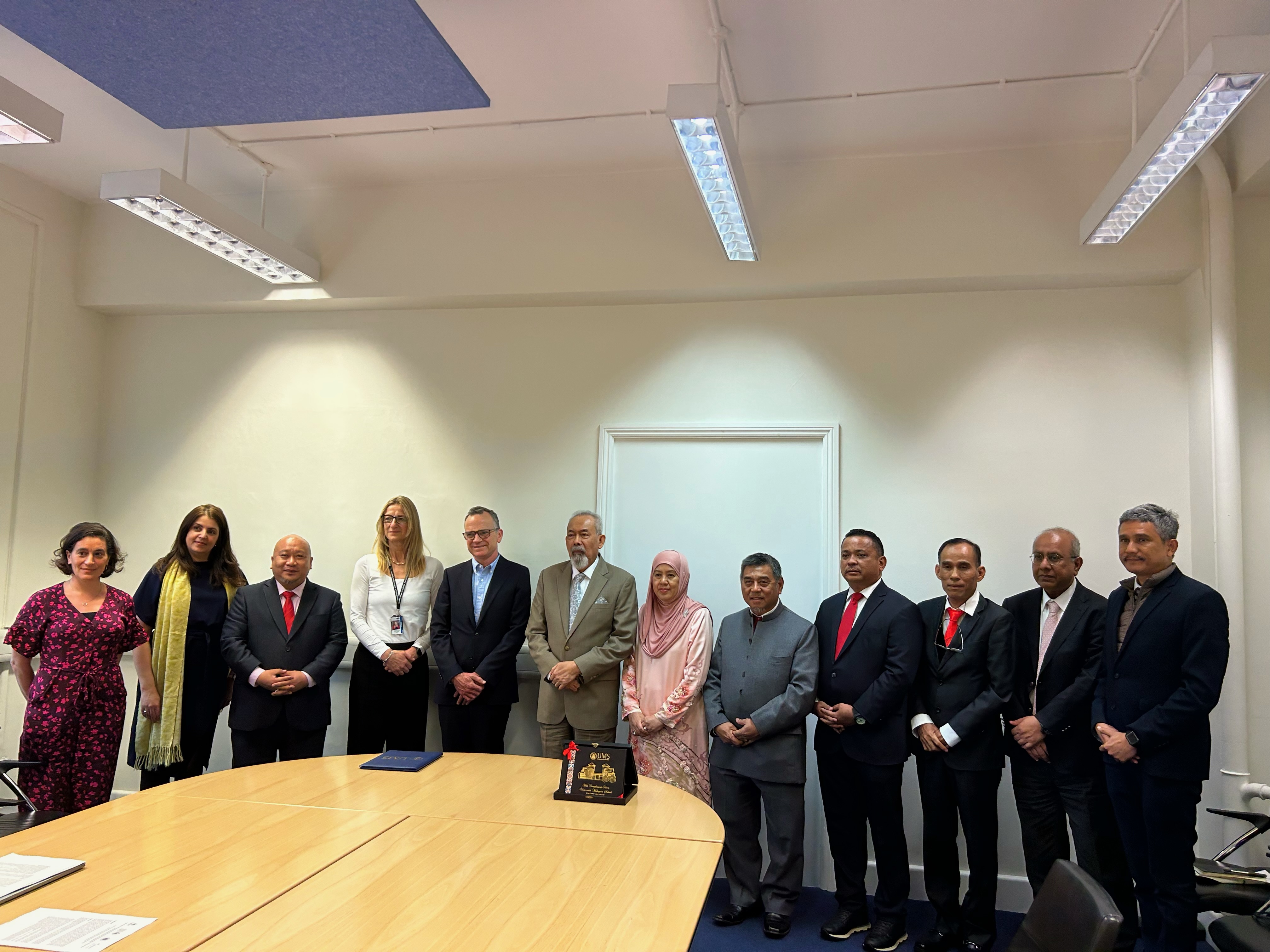- Jumlah paparan: 1401
UMS - Imperial College London bincang usaha bangunkan Hab Inkubasi Penyelidikan dan Inovasi
 LONDON: Universiti Malaysia Sabah (UMS) mengadakan perbincangan penyelidikan bersama Imperial College (IC) di South Kensington di sini, baru-baru ini, sebagai salah satu usaha merealisasikan pembangunan sebuah Hab Inkubasi Penyelidikan dan Inovasi di universiti itu.
LONDON: Universiti Malaysia Sabah (UMS) mengadakan perbincangan penyelidikan bersama Imperial College (IC) di South Kensington di sini, baru-baru ini, sebagai salah satu usaha merealisasikan pembangunan sebuah Hab Inkubasi Penyelidikan dan Inovasi di universiti itu.
Delegasi UMS diketuai Naib Canselor, Profesor Datuk Dr. Kasim Hj. Mansor manakala IC diwakili Provos Profesor Dr Ian Walmsley.
Menurut Dr. Kasim, negeri Sabah kaya dengan sumber alam semula jadi terutamanya biodiversiti, marin, minyak dan gas yang boleh diubah kepada produk bernilai tinggi melalui penyelidikan dan inovasi.
“Sabah juga berada pada lokasi strategik di Kawasan Pertumbuhan ASEAN Timur - Brunei Darussalam-Indonesia-Malaysia-Filipina (BIMP-EAGA) dan dikelilingi oleh laut.
“Oleh kerana itu, Sabah mempunyai kekuatan dalam menyediakan sumber dan UMS berperanan sebagai satu-satunya universiti awam di negeri ini sebagai platform untuk penyelidikan bersama dalam pelbagai bidang khususnya kejuruteraan, teknologi, perubatan dan perniagaan,” katanya.
Turut hadir Ahli Lembaga Pengarah UMS, Samasuddin Yusop; Pendaftar, Luqman Ridha Anwar; Bendahari, Badrul Hisyam Ismail; dan Timbalan Pengarah (Strategik) Pusat Pengurusan Penyelidikan, Prof. Madya Dr. Fatimah Ahmedy.
Dalam pada itu, Dr Ian menyambut baik terhadap usaha UMS dalam membangunkan Hab Inkubasi Penyelidikan dan Inovasi.
Beliau turut berkongsi hal ehwal penyelidikan dan pengkomersialan produk di universiti berkenaan.
“IC memacu hasil penyelidikan dan inovasi melalui pembukaan 373 syarikat awalan (start-up company) dan 370 paten dari pelajar dan kakitangan untuk tujuan pengkomersialan produk.
“Ia berjaya dilaksanakan menerusi pewujudan hub inkubasi dan scale space, ruang ciptaan dan hab-hab penyelidikan di dalam kawasan khusus universiti yang dikenali sebagai White City,” jelas Dr Ian.
Sementara itu, Timbalan Naib Canselor Penyelidikan dan Inovasi UMS, Profesor Ir. Dr. Rosalam Hj. Sarbatly memaklumkan pembangunan White City oleh IC ini dilihat selaras dengan usaha UMS yang sedang membangunkan hab inkubasi pengkomersialan produk penyelidikan dan inovasi.
“Untuk rekod, UMS dan IC telah menjalin hubungan baik sebelum ini melalui penyelidikan bersama dalam kalangan penyelidik sejak beberapa tahun yang lalu,” katanya.
Pada pertemuan itu, turut dibincangkan potensi kolaborasi dalam bidang simulasi penyakit berjangkit menerusi teknologi kecerdasan buatan yang dapat mengesan perubahan taburan wabak pada masa sebenar bagi membolehkan mitigasi dilakukan dengan efektif dan pantas.
Selain itu, sebuah perkongsian topik berkaitan ekologi dan penyakit berjangkit di kalangan haiwan-haiwan kecil dalam kawasan Sabah turut disampaikan oleh Penyelidik IC, Profesor Dr Rob Ewars.
Hadir sama, Pengarah Pusat Penyelidikan Perubatan dan Kesihatan Borneo UMS, Prof. Dr. Kamruddin Ahmed dan Profesor Epidemiologi Penyakit Berjangkit IC, Prof. Dr. Azra Gani.



 Pewujudan SDG Walk di Bangunan Fakulti Perubatan dan Sains Kesihatan (FPSK) Universiti Malaysia Sabah (UMS) merupakan langkah proaktif fakulti tersebut untuk mendidik pelajar dan kakitangan mengenai Sustainable Development Goals (SDG) selangkah dengan gerakan global menuju pembangunan mampan.
Pewujudan SDG Walk di Bangunan Fakulti Perubatan dan Sains Kesihatan (FPSK) Universiti Malaysia Sabah (UMS) merupakan langkah proaktif fakulti tersebut untuk mendidik pelajar dan kakitangan mengenai Sustainable Development Goals (SDG) selangkah dengan gerakan global menuju pembangunan mampan. The 3rd Borneo Quality of Life Conference, themed "Quality of Life Across All Ages," will take place at Universiti Malaysia Sabah next week from May 23rd-26th, 2023.
The 3rd Borneo Quality of Life Conference, themed "Quality of Life Across All Ages," will take place at Universiti Malaysia Sabah next week from May 23rd-26th, 2023. Sabah China Chamber of Commerce (SCCC) recently visited Faculty of Business, Economics and Accountancy (FBEA), Universiti Malaysia Sabah (UMS) for a discussion regarding potential collaboration between universities in Hubei Province, China and FBEA UMS.
Sabah China Chamber of Commerce (SCCC) recently visited Faculty of Business, Economics and Accountancy (FBEA), Universiti Malaysia Sabah (UMS) for a discussion regarding potential collaboration between universities in Hubei Province, China and FBEA UMS. LONDON – Dalam usaha meningkatkan kesejahteraan rakyat di negeri ini, Universiti Malaysia Sabah (UMS) menjalin kerjasama erat dengan London School of Hygiene & Tropical Medicine (LSHTM).
LONDON – Dalam usaha meningkatkan kesejahteraan rakyat di negeri ini, Universiti Malaysia Sabah (UMS) menjalin kerjasama erat dengan London School of Hygiene & Tropical Medicine (LSHTM).